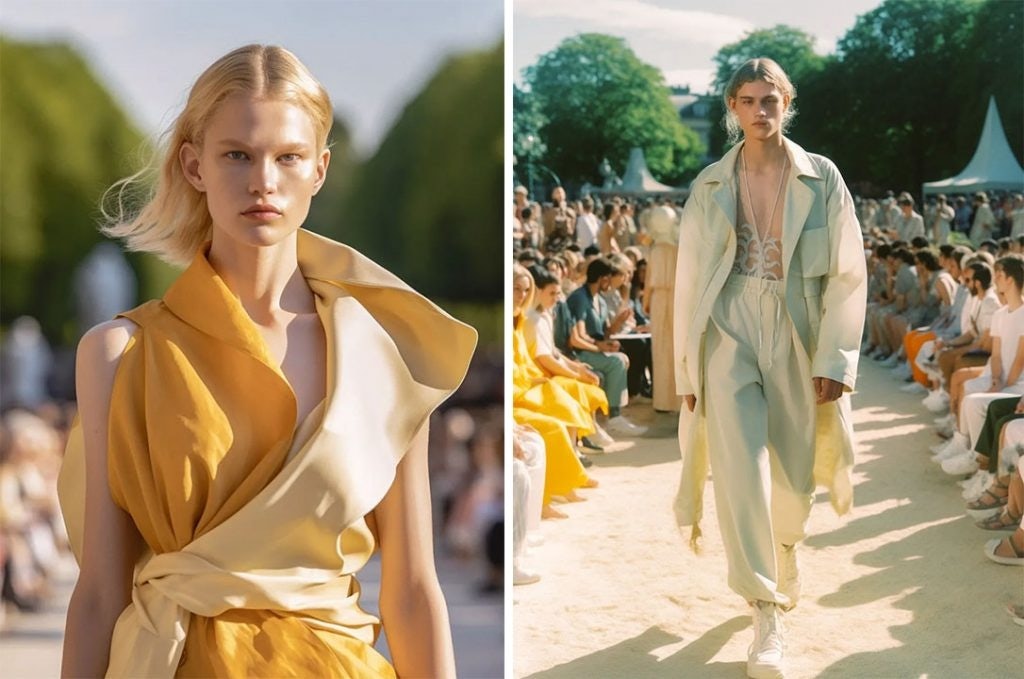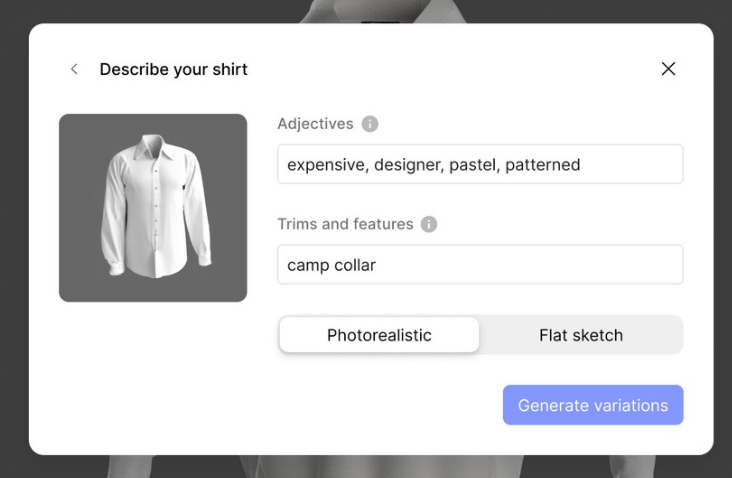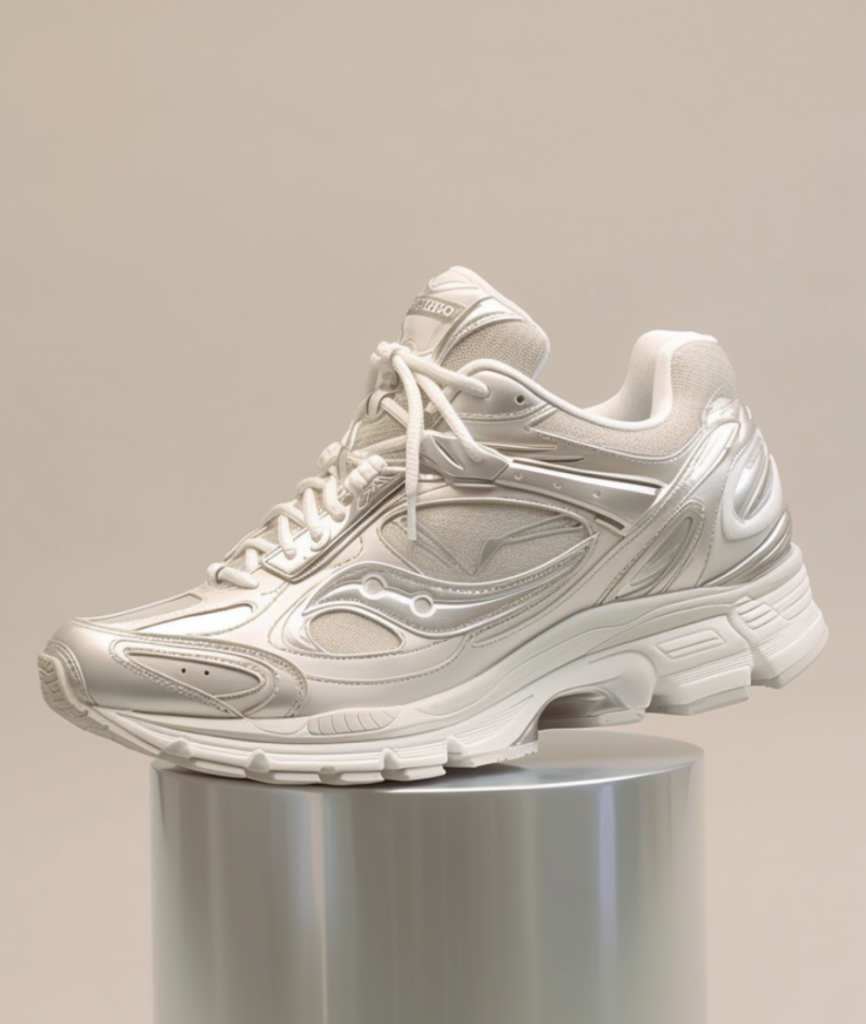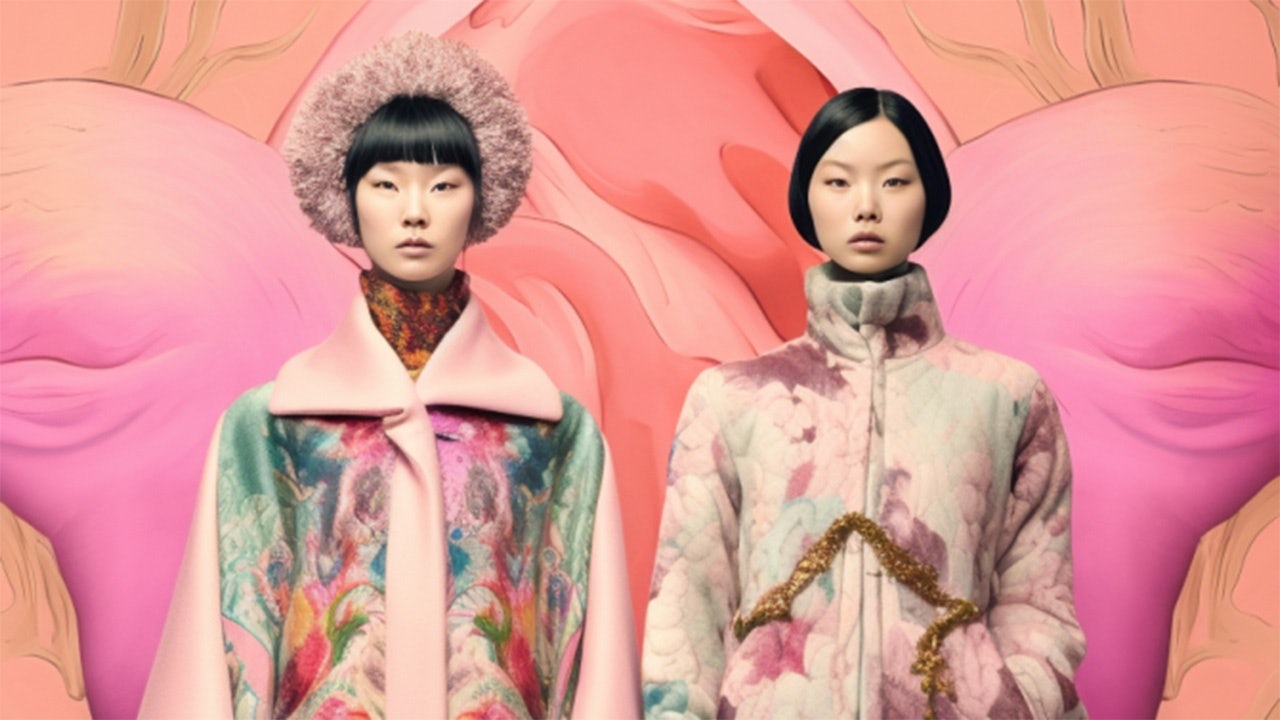Editor's note: The story has been updated to reflect that Revolve was a partner at AI Fashion Week.
Artificial intelligence (AI) is cementing its pivotal role in shaping the fashion’s future. The technology is set to add anywhere from $150 billion to $275 billion to apparel, fashion and luxury sector operating profits in the next three to five years, according to McKinsey.
One of the ways in which this will happen is likely through the adoption of AI as a design assistant.
Brands like Tommy Hilfiger are encouraging this shift. In this year’s Metaverse Fashion Week held in March, the American clothing brand hosted an AI design contest. The goal was to create a digital fashion item in the classic Hilfiger style. The winning design was made into a digital wearable, available for purchase on virtual fashion platform DressX.

AI Fashion Week#
Events such as Maison Meta's AI Fashion Week in New York have also turned the spotlight on the synergistic relationship between AI and fashion. Supported by online retailer Revolve, this event invited designers to push the boundaries of what's possible in fashion using AI image generators. The result was an impressive showcase of AI-assisted designs that challenged traditional norms and conventions in fashion.
Take, for example, Matilde Mariano’s collection for AIFW, which features highly realistic models in an outdoors Tuileries setting. The collection was entirely created by Midjourney, a popular AI image generator.

Transforming fashion design with text-to-design#
Stitch Fix uses AI recommendation algorithms and data science to personalize clothing items based on a user's preferences. With generative AI, advanced AI programs that are able to generate sophisticated content such as images, there’s the possibility of taking things one step further, to the product design level.
Cala aims to provide fashion brands and retailers with an all-in-one platform that powers every step of the fashion design and supply chain process, while allowing for collaboration, designing, manufacturing and more. Cala uses image generators for users to create new design ideas from text descriptions.

Leaks and limitations#
Generative AI for fashion design is showing promise, but challenges persist. One of those risks is leaks. Images uploaded to AI image generators are typically also added to the platform’s database, making leaks possible.
Salma Aboukar, founder of generative AI agency Qreates, says her rule of thumb for brands is “if the product has already been released, you can use generative AI. If it’s not out there yet, then it wouldn’t be ideal. For products that are already out there, it’s likely that Midjourney or Dall-e have already incorporated it in their training data.” She also sees a huge gap when it comes to how big brands or smaller startups are approaching the technology.
“We work with brands that are using generative AI for the first time. There are roughly two groups. On the one hand are the VC-funded startups, which really overestimate what AI can do. They think it’s like magic, which is really a stretch. There are limitations,” says Aboukar.
"On the one hand are the VC-funded startups, which really overestimate what AI can do. They think it’s like magic, which is really a stretch. There are limitations."
“On the other side of the spectrum, there are the big brands. They want to incorporate generative AI but are also rightly cautious: They have a lot of IP to protect, and are wary of leaks. Yet, they still want to move forward with the technology because it is such a transformative tool. That works perfectly when the limitations are understood and taken into consideration,” she adds.

And there are significant limitations. AI is far from a cure-all or a substitute for strong design.
“A lot of generative AI is bad,” according to Richard Hobbs, CEO of Web3 fashion company Brand New Vision. Nonetheless, he believes generative AI tools will become a key part of the creative toolbox.
“In the end, the level of creativity and quality of the output will be determined by the skill of the individual. Curation and quality control, as always, are really important. Over time, the cream will rise to the top. Image generation tools are still just that: a tool. Taste and creativity are still most important," says Hobbs.
Click here to download Jing Daily’s latest insight report, “The Future of Generative AI for Luxury” to explore the $275 billion generative AI opportunity for luxury.

